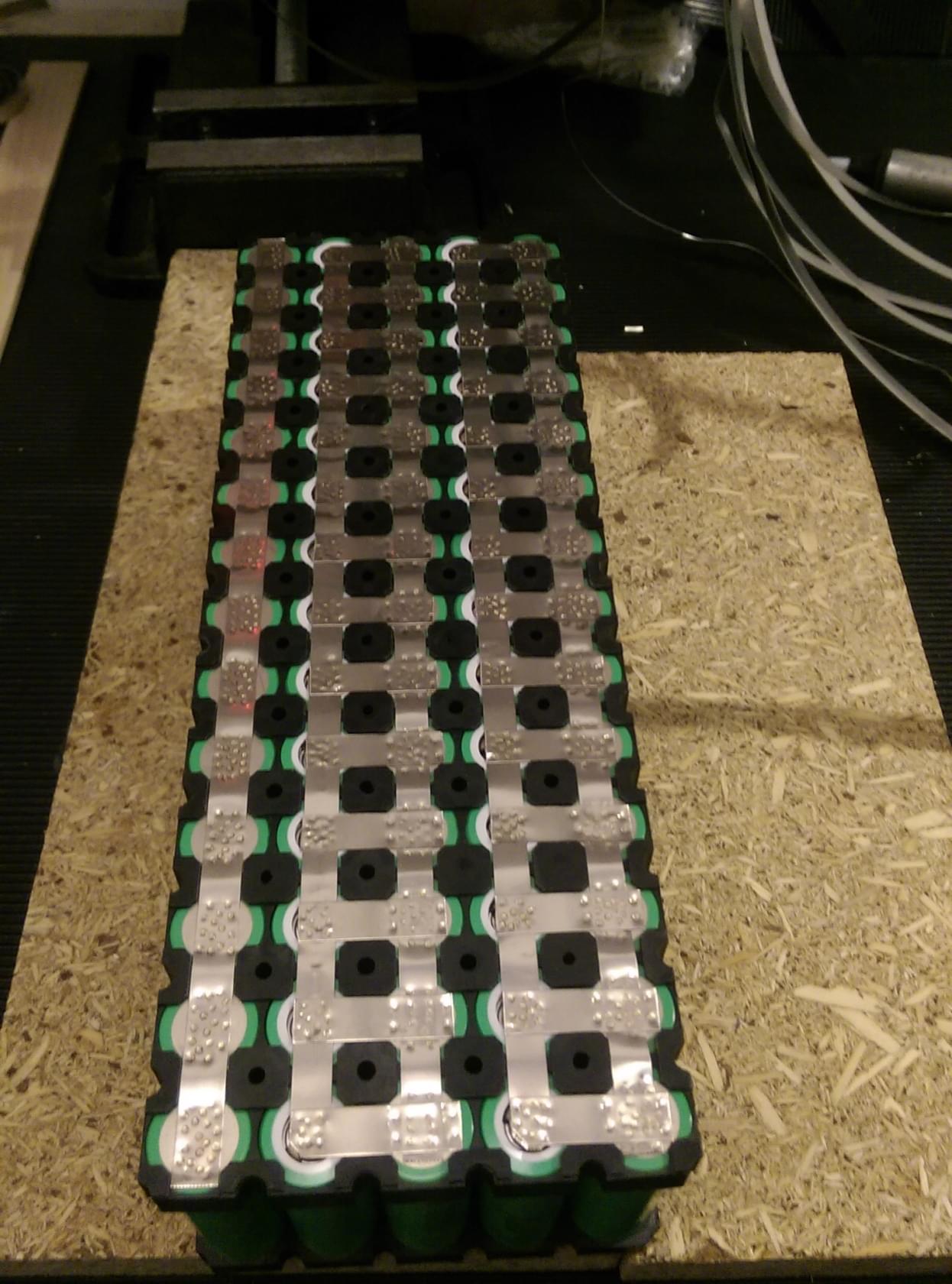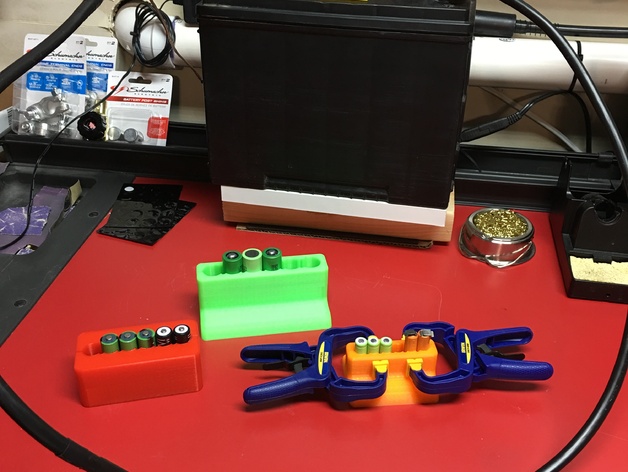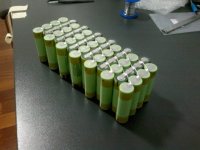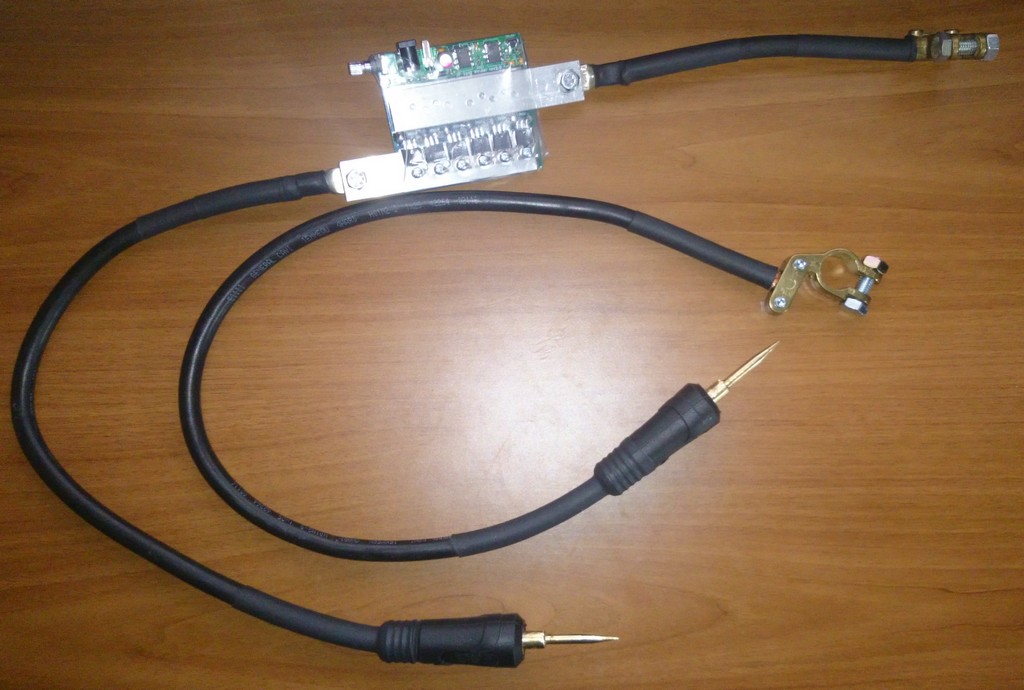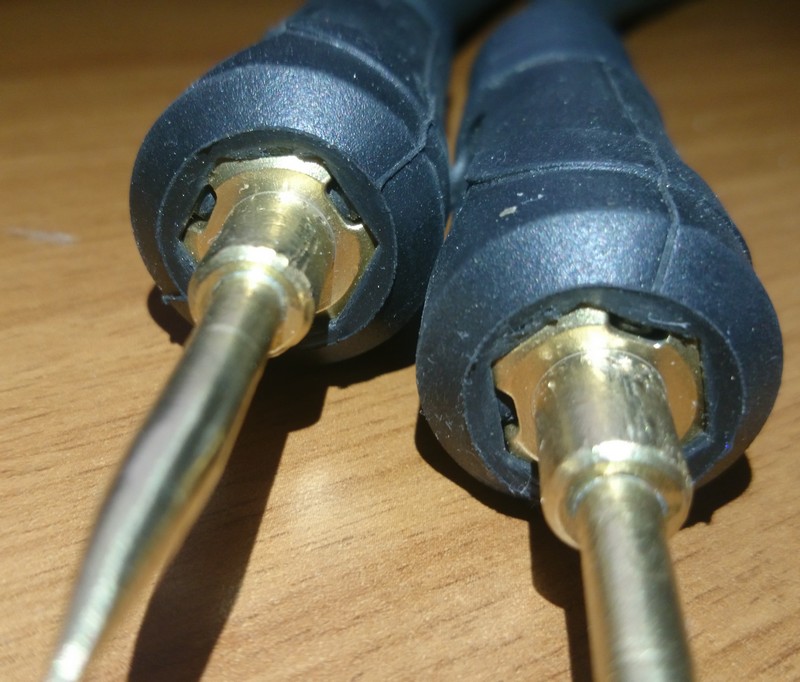Finally I got my JP Spot Walder + Electrodes to work (already had footswitch and 12V DC adapter).
At first I bought only the welder, and I've managed to build electrodes on my own, using 2 DINSE connectors with brass tips industrially soldered and 10-25mm welding cable. It wasn't a bad rig, look at the photos
BUT (to put it simply) IT DIDN'T WORK.
The brass tips ALWAYS stick to the nickel strip (0,15*8 mm pure nickel) and the nickel strip won't stick at all to the 18650`s metal surface (tried both negative and positive sides, just to be sure).
This are the ”original” JP's electrodes, very solid and accurate construction
that works perfectly. Tried today (with the same 0,15*8 mm pure nickel strip) using a six months old VARTA C14 56AH 480A fully charged yesterday, and some dead 18650 batteries from a dismissed 18V Makita pack.
Originally, the Makita battery was assembled using thick nickel strip (at least 0,3mm) and I encountered some difficulties desoldering the batteries without destroying/ruining everything inside the plastic case.
Using JP's spot welder and
10ms time, the soldering points between nickel strip and 18650 battery have 90 % strength of original Makita industrial soldering process (maybe they rely on the same JP spot solder, who knows

) and I suspect the 0,3mm thickness plays a determinant role in obtaining a such effective result. I don't see the reason (with such weak 56Ah battery) to cut down welding time to 6-7ms, 2-3 ms more wouldn't destroy your new 18650 batteries, and using less time than necessary leaves you with less than reliable welding spots between nickel strip and batteries.
I plan to buy 0,2*8 mm strip, I'll post my result with it (have to wait 3-4 weeks, China is not so close to Europe

).



